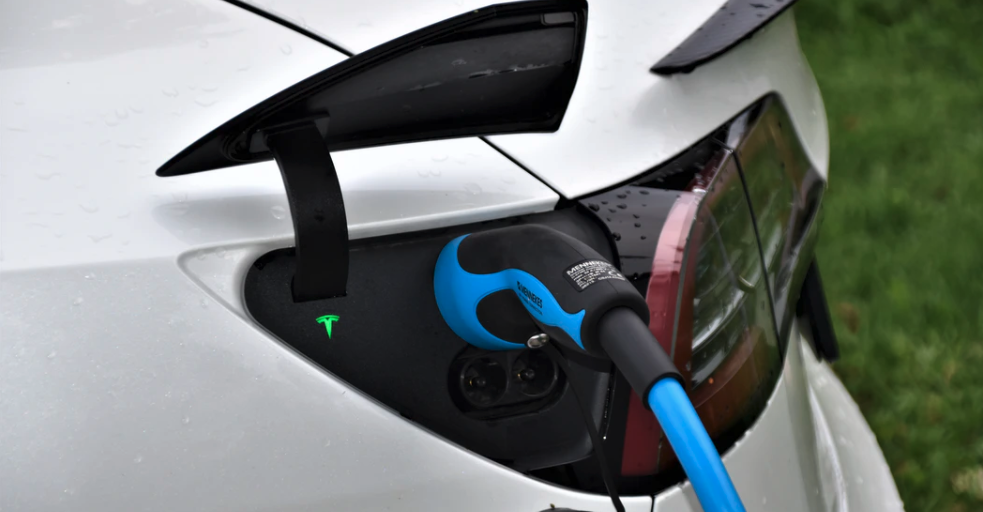There are two significant milestone dates set that impact adoption of EV in the UK; the ban on new sales of ICE cars in 2030 and the Net Zero 2050 goal. We are just under 10 and 30 years away from these dates respectively.
A reasonable assumption then would be that the number of EV car registrations will see a steady rise in total registrations per year towards 2030 which sees old ICE cars (and hybrids) get replaced with newer EV cars due as overall adoption, availability and charging infrastructure increases and encourages the transition. Then, from 2030 onwards, there will be a gathering pace of adoption that will see this disruption become more meaningful -representing a 30-year timeline to majority adoption and perhaps 40 years for 100% EV.
However, if the previous pattern of technology adoption applies to EV, and there is no reason to think it will not; then these timescales are too long. Disruptive technology adoption takes 10 – 15 years to reach majority use. It must be borne in mind that adoption of new technology is not a straight line; it is always an S-Curve.
“Technology disruption is never a straight line, it’s always an s-curve.”
Understanding this, I charted the S-Curve of EV adoption from now to the Net Zero 2050 date, working with an EV adoption level of 6% as at mid 2021, (though other reports place this at 19%, this includes HEV + EV, not just EV.) Excluding technology convergence, which will sharpen the curve and see adoption timelines shorten, as we see more and more today.

We can see the curve predicts that majority adoption is closer to 15 years, not 30 years. After reading around further, I saw KPMG published a more aggressive figure, where Deloitte’s more current figure aligns to my own:
- KPMG: 69% by 2030, 94% by 2040 (Feb-19)
- Deloitte: 32% by 2030 (Jul-20)
These figures do not take into account the global COVID pandemic of 2020/2021 impacting adoption, policy gaps or societal preferences that slow down consumer take-up of EV.
Analysis also needs to be done around possible disruptions / market traumas which may also occur, some I derived from further research include:
- The government outright ban the use of ICE cars (and other vehicles) before 2050 partly to assure the Net Zero 2050 goal is achieved (aka Germany pulling forward Net Zero goals to 2045), but also as part of transport policy and regulation, affecting the motor vehicle, insurance and supply chain sectors.
- A special provision for vintage cars; as there is now around road tax -but numbers of commonly available ICE vehicles will more rapidly reduce as the availability of suitable fuel, insurance and means of maintenance will be more difficult to find or extremely costly where provided.
- Car manufacturers (including tier 1 and 2 component suppliers) may abandon production and supply to the UK before 2030 to avoid participation in a diminishing industry, moving instead to EV component supply (as we’re seeing in Spain) (more on supply chain response and insetting strategies in later articles).
- Car ownership may be influenced by autonomous vehicles and pool cars to such a degree that new car sales drop and/or second hand ICE car value crashes as EV price parity is reached and exceeded.
- EV maintenance is simpler than ICE, and EV vehicles last longer than ICE, meaning the economics of vehicle repair firms may no longer be viable, though an opportunity exists to move into recycling and create/support a circular economy. (more on that too in later articles).
To know what scenarios might actually occur needs in depth analysis. However, even with simple reflection, it’s easy to see that the automotive industry, guided by the Society of Motor Manufacturers and Traders (SMMT), will experience massive, decades long disruption. When considering the impact of EV, decarbonisation and restructuring of the supply chain, the SMMT says it will be;
“…the most ambitious industrial transformation in automotive history”. SMMT
The automotive manufacturers, multi-tier supplier base and industry elements clearly need a far reaching strategic transformation plan that addresses the speed of change from the technology disruption that EV and decarbonisation will bring.
Mark.

